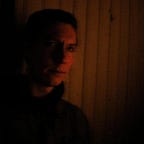Walk Through the Uncanny Valley of the Dolls
How hyper-realistic Reborn dolls led a photographer to open her own retail nursery
Reborn dolls are an exercise in painstaking detail. These aren’t toys. They’re artisanal refurbishments, adopted through online nurseries, and cooed over at conventions. Born in the 1990s, the fad has blossomed into a healthy subculture, albeit a widely misunderstood one.
Certain people are repulsed by the life-like creations but when Jamie Diamond stumbled across the movement she was drawn in. The multi-disciplinary artist was working on I Promise to Be a Good Mother, a project where she re-enacted memories of childhood dressed in her mother’s clothes. A hyper-realistic stand-in for her own child was perfect for the series, and the project kicked off a six-year trip into the art and commerce of Reborn dolls.
“The photographs are performances in themselves but also autonomous images commenting on the genre of family portraiture, critiquing the medium of photography and challenging our perception as viewers,” Diamond says.
One of Diamond’s previous projects starred complete strangers posing for family portraits together and another showed tender moments shared by couples who had just met. Tackling societal assumptions about how mothers and children look and interact was a natural progression in her studies of artifice.
To truly comprehend the Reborn world Diamond needed to understand the people who make and love them. She spent a year meeting collectors, creators and their families, not an easy community to get to know. Past media exposés on people using the dolls to cope with the loss of a child or other therapeutic pursuits had made everyone naturally suspicious of outsiders carrying cameras.
“I traveled across America photographing these women in their home environments as a way to understand their motivations and desires,” says Diamond. “There is a lot of outside scrutiny and judgment associated with this culture, and from the beginning I knew I didn’t want my work to be an exploitive photographic essay.”
“I think it has something to do with our photographic conditioning. We know what to expect when we see a family portrait, and aren’t prepared to be deceived. We are pre- programmed through a lifetime of exposure and tend not to analyze beyond the surface because of that.”
During the initial research Diamond became enthralled with the standardized behaviors and work methods shared by an otherwise disparate group of people. She decided to take vinyl in hand and learn the art of Reborning to fully appreciate where these artists were coming from.
After perfecting fabrication techniques she opened her Bitten Apple nursery, offering the fruit of her labor up for adoption. Sales helped fund a portion of her work but the core interest was in the exchange of her creations. Portraits shot in her studio became records of commerce that transcended the Reborn scene and bled into fine art.
“I think that is an important conceptual part of this project. The photograph for one, serves as a remnant of this exchange and secondly because it engages the dialogue surrounding the commodification of these objects as a collectable art form. I am interested in this parallel outsider art world, these objects have inherent value and additionally by selling them throughout the process, I have in part funded the project. I like the idea that I’m selling my work to two art audiences, I have Reborn collectors who buy my dolls and art collectors who buy my photographs. That dialogue interests me.”
Diamond also approached the most talented Reborners she could find for collaboration. First they were drafted to create individual dolls built from the same shell which was passed from artist to artist and photographed by Diamond in a school-portrait setting. Then she commissioned dolls mimicking popular depictions of the baby Jesus.
Bitten Apple has shut its doors by Diamond maintains close relationships with many of the people she met through the Reborn movement. Away from hand-rooting eyelashes and painting on toenails she’s resumed a routine that takes her from home in New York to a studio in Jersey City to position with a university in Philadelphia.
Elements of the project continue on as exhibitions with several slated for this year, and she’s currently researching the next art intervention, whether it take the form of photographs, video or just putting the right pieces together to form a more challenging experience.
“Creating social experiments fascinates me. Part of the beauty of the work for me lies in its organic nature. I don’t like to dictate too much to the subjects, relying on them to play themselves in these familiar/unfamiliar contexts.”
If you enjoyed reading this, please click “Recommend” below.
This will help to share the story with others.
